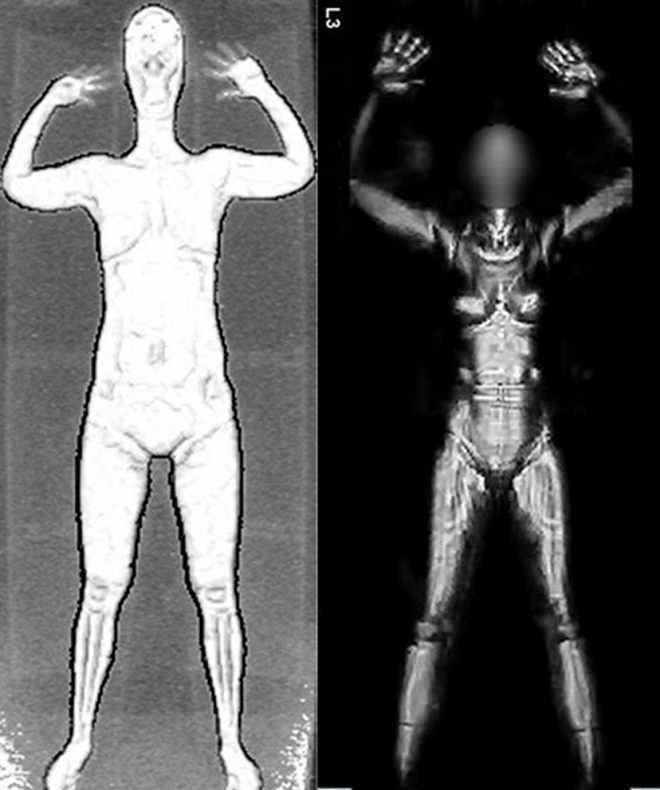In Jason Edward Harrington's
Dear America, I Saw You Naked, he reveals that he was the anonymous TSA agent who wrote the
Taking Sense Away
tell-all/whistleblower blog. Harrington's piece is a shocking and
eye-opening look into the world of TSA agents, especially the section
dealing with the "IO room" where the nude photos of travellers who used
the Rapiscan machines were displayed:
Most of my co-workers found humor in the I.O. room on a cruder level.
Just as the long-suffering American public waiting on those security
lines suspected, jokes about the passengers ran rampant among my TSA
colleagues: Many of the images we gawked at were of overweight people,
their every fold and dimple on full awful display. Piercings of every
kind were visible. Women who’d had mastectomies were easy to
discern—their chests showed up on our screens as dull, pixelated
regions. Hernias appeared as bulging, blistery growths in the crotch
area. Passengers were often caught off-guard by the X-Ray scan and so
materialized on-screen in ridiculous, blurred poses—mouths agape, à la
Edvard Munch. One of us in the I.O. room would occasionally identify a
passenger as female, only to have the officers out on the checkpoint
floor radio back that it was actually a man. All the old, crass
stereotypes about race and genitalia size thrived on our secure
government radio channels.
There were other types of bad behavior in the I.O. room—I personally
witnessed quite a bit of fooling around, in every sense of the phrase.
Officers who were dating often conspired to get assigned to the I.O.
room at the same time, where they analyzed the nude images with one eye
apiece, at best. Every now and then, a passenger would throw up two
middle fingers during his or her scan, as though somehow aware of the
transgressions going on.
But the only people who hated the body-scanners more than the public
were TSA employees themselves. Many of my co-workers felt uncomfortable
even standing next to the radiation-emitting machines we were forcing
members of the public to stand inside. Several told me they submitted
formal requests for dosimeters, to measure their exposure to radiation.
The agency’s stance was that dosimeters were not necessary—the radiation
doses from the machines were perfectly acceptable, they told us. We
would just have to take their word for it. When concerned
passengers—usually pregnant women—asked how much radiation the machines
emitted and whether they were safe, we were instructed by our superiors
to assure them everything was fine.


No comments:
Post a Comment